
How to Use 2N2222: Examples, Pinouts, and Specs
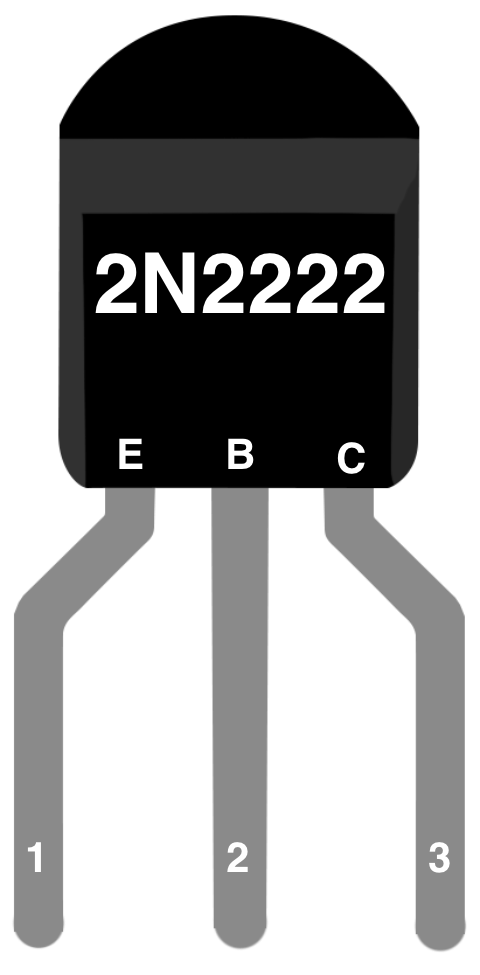
 Design with 2N2222 in Cirkit Designer
Design with 2N2222 in Cirkit Designer2N2222 NPN Bipolar Junction Transistor Documentation
1. Introduction
The 2N2222 is a widely used NPN bipolar junction transistor (BJT) designed for low to medium power switching and amplification applications. Known for its versatility, reliability, and ease of use, the 2N2222 is a staple in many electronic circuits. It is commonly used in hobbyist projects, educational setups, and professional designs due to its robust performance and availability.
Common Applications:
- Signal amplification in audio and RF circuits
- Low to medium power switching applications
- Driving small loads such as relays, LEDs, and small motors
- Oscillator circuits
- General-purpose amplification in analog circuits
The 2N2222 is particularly popular in circuits involving microcontrollers like the Arduino UNO, where it is used to interface and control higher-power devices.
2. Technical Specifications
The following table outlines the key technical specifications of the 2N2222 transistor:
| Parameter | Value | Description |
|---|---|---|
| Transistor Type | NPN | Current flows from collector to emitter when base is activated. |
| Maximum Collector Current (IC) | 800 mA | Maximum current the transistor can handle. |
| Maximum Collector-Emitter Voltage (VCE) | 40 V | Maximum voltage between collector and emitter. |
| Maximum Base Current (IB) | 200 mA | Maximum current that can flow into the base. |
| DC Current Gain (hFE) | 100 - 300 | Amplification factor of the transistor. |
| Power Dissipation (PD) | 500 mW | Maximum power the transistor can dissipate. |
| Transition Frequency (fT) | 250 MHz | Frequency at which the transistor operates efficiently. |
| Package Type | TO-18 / TO-92 | Commonly available in TO-92 for hobbyist use. |
| Operating Temperature | -55°C to +150°C | Safe operating temperature range. |
Pin Configuration (TO-92 Package)
The 2N2222 is commonly available in a TO-92 package. The pinout is as follows:
| Pin Number | Pin Name | Description |
|---|---|---|
| 1 | Emitter (E) | Current flows out of this pin. |
| 2 | Base (B) | Controls the transistor's operation. |
| 3 | Collector (C) | Current flows into this pin. |
Below is a diagram of the TO-92 package pinout:
_______
| |
| |
|_______|
| | |
1 2 3
E B C
3. Usage Instructions
Using the 2N2222 in a Circuit
The 2N2222 can be used in two primary configurations:
- Switching Mode: The transistor acts as an electronic switch to control devices like LEDs, relays, or motors.
- Amplification Mode: The transistor amplifies small input signals to produce larger output signals.
Example: Using the 2N2222 as a Switch
Below is a simple example of using the 2N2222 to control an LED with an Arduino UNO:
Circuit Components:
- 1 x 2N2222 transistor
- 1 x Resistor (1 kΩ for the base)
- 1 x Resistor (330 Ω for the LED)
- 1 x LED
- Arduino UNO
Circuit Diagram:
Arduino Pin 9 ----[1 kΩ]----|B
| 2N2222
|C----[330 Ω]----|>|---- GND
|E
|
GND
Code Example:
// 2N2222 Transistor LED Control Example
// Connect the base of the 2N2222 to Arduino pin 9 through a 1 kΩ resistor.
// The collector is connected to the LED (with a 330 Ω resistor), and the emitter
// is connected to ground.
int ledPin = 9; // Pin connected to the base of the 2N2222
void setup() {
pinMode(ledPin, OUTPUT); // Set pin 9 as an output
}
void loop() {
digitalWrite(ledPin, HIGH); // Turn on the LED
delay(1000); // Wait for 1 second
digitalWrite(ledPin, LOW); // Turn off the LED
delay(1000); // Wait for 1 second
}
Important Considerations:
- Base Resistor: Always use a resistor between the base and the control signal to limit the base current and prevent damage to the transistor.
- Collector Current: Ensure the load connected to the collector does not exceed the maximum collector current (800 mA).
- Heat Dissipation: For high-power applications, consider using a heatsink to prevent overheating.
- Polarity: Double-check the pin configuration to avoid incorrect connections.
4. Troubleshooting and FAQs
Common Issues and Solutions
| Issue | Possible Cause | Solution |
|---|---|---|
| Transistor does not turn on | Insufficient base current | Use a smaller base resistor to increase current. |
| Transistor overheats | Exceeding power dissipation limit | Reduce load current or use a heatsink. |
| Load does not operate correctly | Incorrect pin connections | Verify emitter, base, and collector connections. |
| LED stays on or off permanently | Faulty transistor or incorrect base signal | Replace the transistor or check the control signal. |
Frequently Asked Questions (FAQs)
Can I use the 2N2222 for high-power applications?
- No, the 2N2222 is designed for low to medium power applications. For higher power, consider using a power transistor like the TIP120.
What is the maximum frequency the 2N2222 can handle?
- The 2N2222 has a transition frequency (fT) of 250 MHz, making it suitable for high-frequency applications.
Can I use the 2N2222 without a base resistor?
- No, a base resistor is essential to limit the base current and protect the transistor from damage.
Is the 2N2222 compatible with 3.3V microcontrollers?
- Yes, the 2N2222 can be used with 3.3V microcontrollers, but ensure the base current is sufficient to saturate the transistor.
5. Conclusion
The 2N2222 NPN transistor is a versatile and reliable component for a wide range of electronic applications. Whether you're a beginner learning about transistors or an experienced engineer designing circuits, the 2N2222 offers a simple and effective solution for switching and amplification tasks. By following the guidelines and best practices outlined in this documentation, you can maximize the performance and longevity of this essential component.
Explore Projects Built with 2N2222
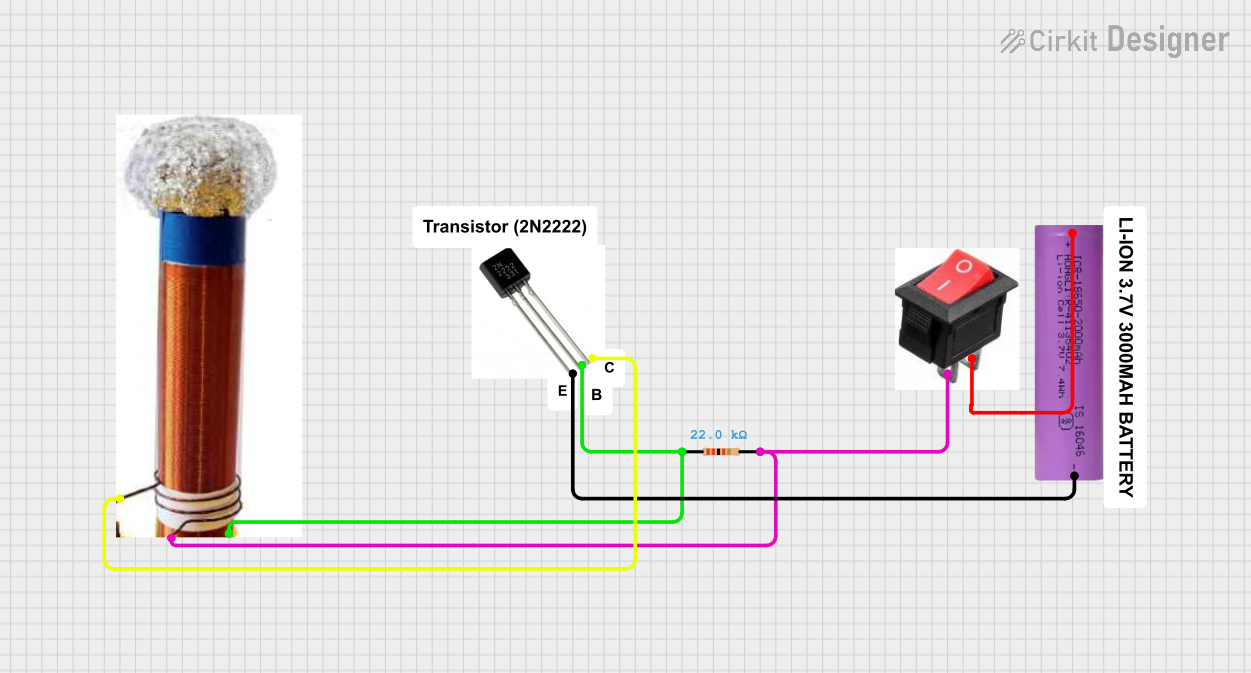
 Open Project in Cirkit Designer
Open Project in Cirkit Designer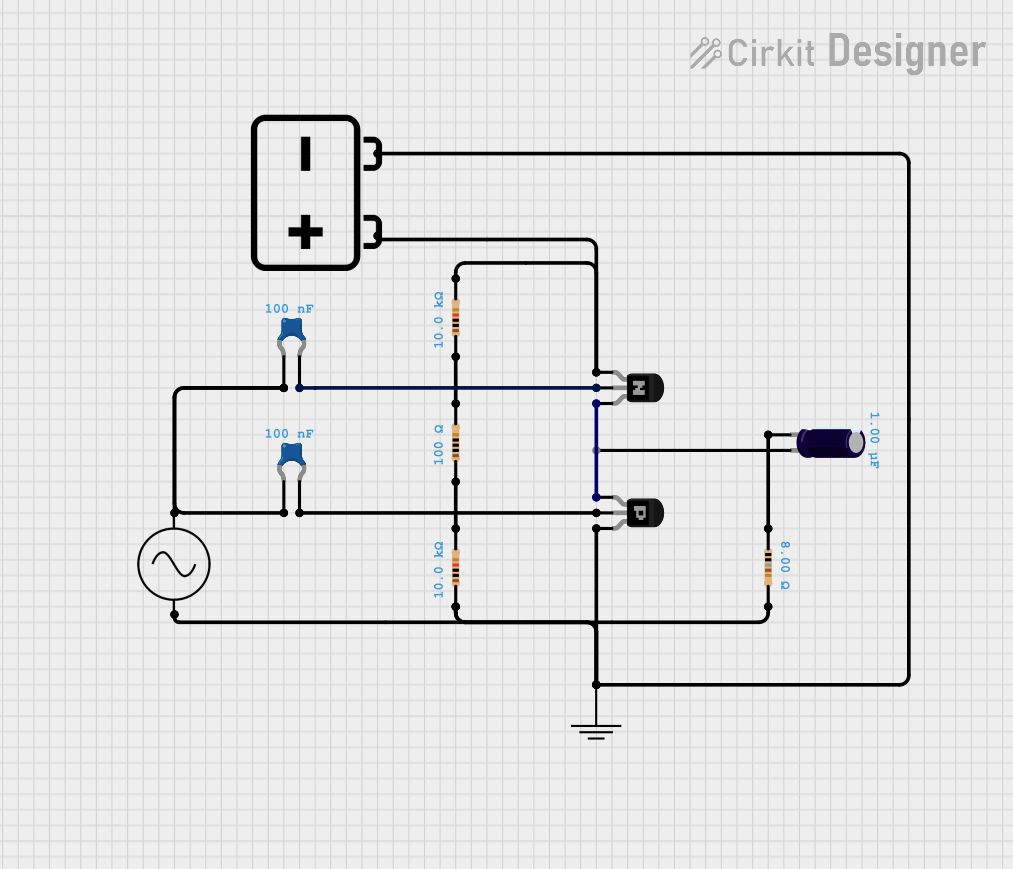
 Open Project in Cirkit Designer
Open Project in Cirkit Designer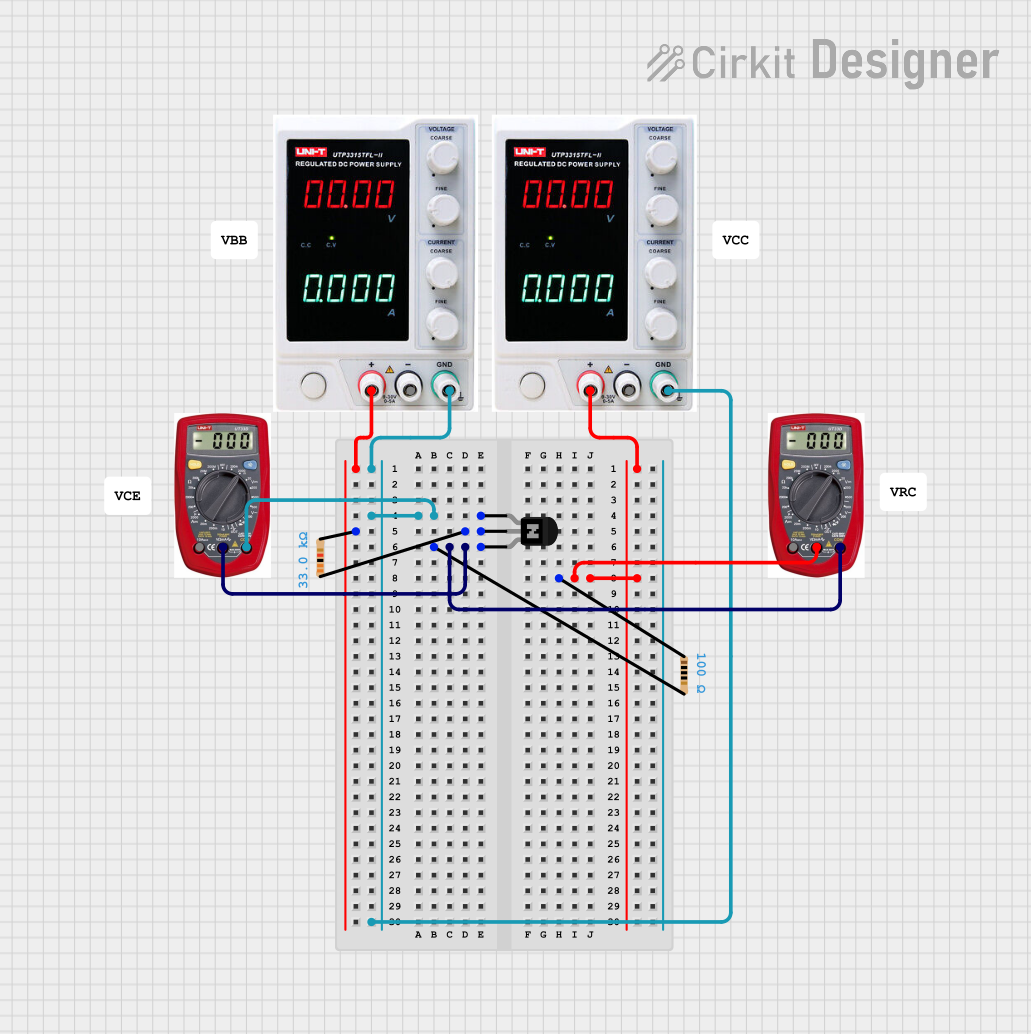
 Open Project in Cirkit Designer
Open Project in Cirkit Designer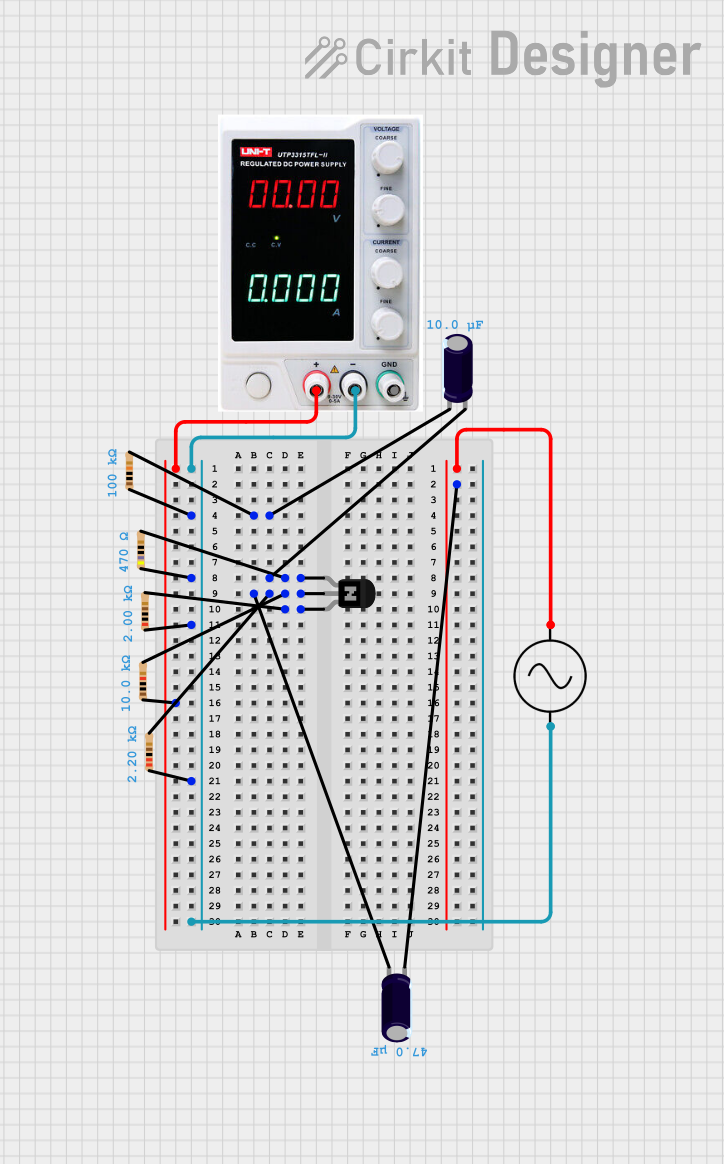
 Open Project in Cirkit Designer
Open Project in Cirkit DesignerExplore Projects Built with 2N2222

 Open Project in Cirkit Designer
Open Project in Cirkit Designer
 Open Project in Cirkit Designer
Open Project in Cirkit Designer
 Open Project in Cirkit Designer
Open Project in Cirkit Designer
 Open Project in Cirkit Designer
Open Project in Cirkit Designer